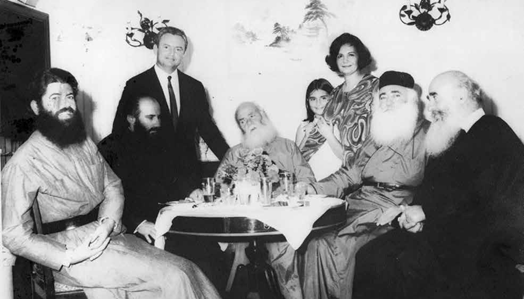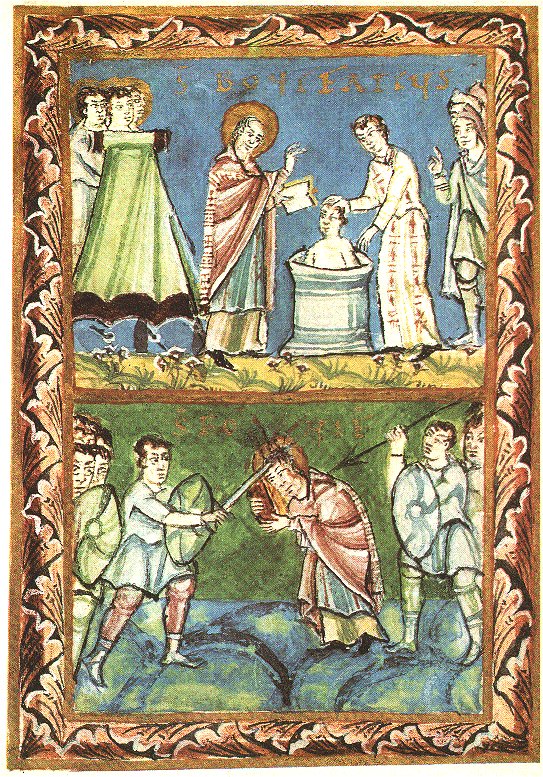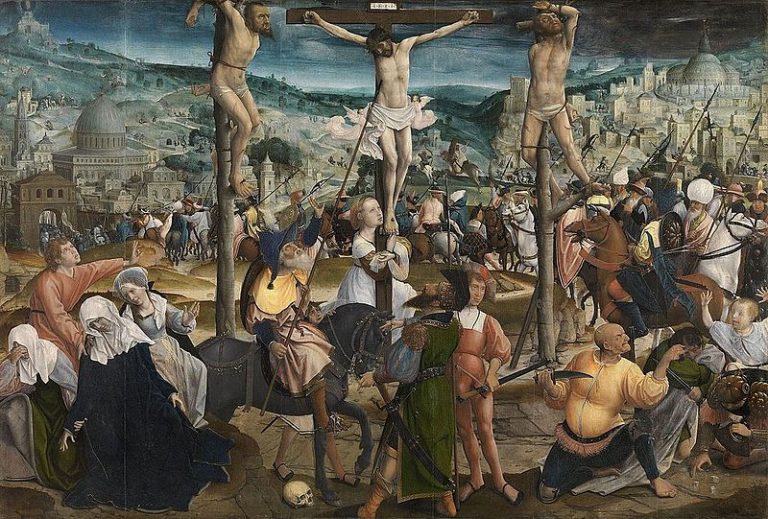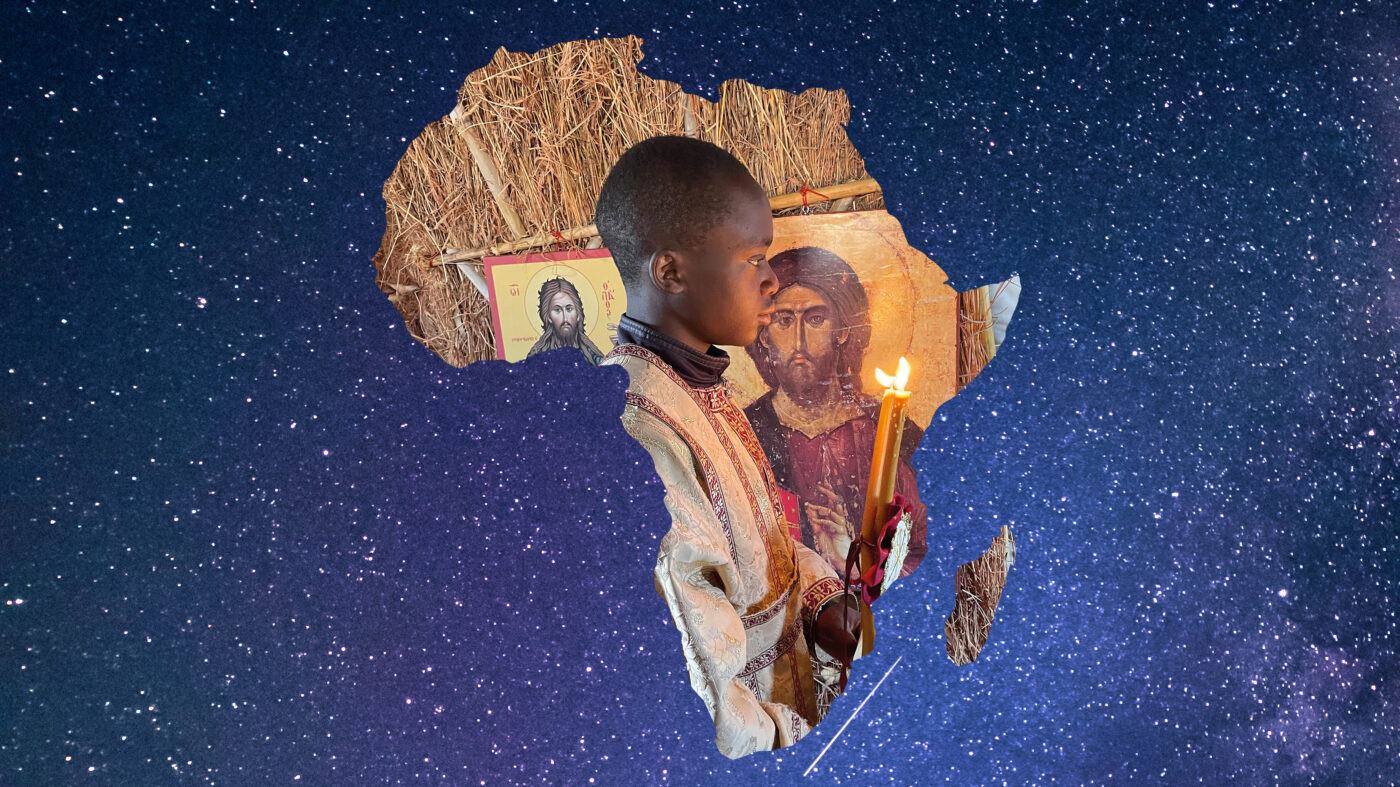Saints Emilio and Castus the African
We meet Saints Emilio and Castus in the middle of the 3rd century AD in Carthage, a great city of the Roman Empire and the African continent. Unfortunately, we do not know enough biographical information about the saints. However, we will take advantage for this presentation of what is given to us by Saints Cyprian, Bishop of Carthage, and St. Augustine. The emperor of the Roman Empire was the pagan Decius, an enemy of Christianity and a relentless persecutor of the faithful. We have no clear information on whether Saints Aemilius and Castus were descended from Christian families or whether they converted to Christianity at an older age. In the persecution against the Christians, the saints were caught in the eye of the cyclone. Their dilemma was immense: the cost, on the one hand, monstrous and horrible; martyrdom, death by burning, and on the other, humiliating, cowardly, spiritually cowardly to deny their faith, to save their earthly, locally and temporally limited life, and to lose their eternal soul. Sadly, initially, they chose the latter. That is, they denied their faith in the face of the certainty of the brutality of martyrdom and sacrificed on the altar in honor of the pagan deities on the Capitol. They became “fallen”. In a text on the fallen ones, St. Cyprian Bishop of Carthage states:
When he voluntarily came to the Capitol, when he willingly came close to obedience to cruel crime, did not his heart tremble, did not his hands fall down? Did he not lose consciousness, did not his tongue become stuck, did his speech fail? Could the servant of God stand there and speak and deny Christ, when he had already renounced the devil and the world? Was not that altar, which he approached, annihilation to him? Did he not ought to be frightened and flee from the devil’s altar, which had seemed to smoke and emit abominations, as if it were the funeral and burial of his life? Why dost thou bring with thee, wretch, a carcass to sacrifice? Thou thyself art a carcass on the altars; thou thyself art come as a victim. There thou hast sacrificed thy salvation, thy hope; there thou hast laid down thy faith in the funeral pyre.”
(Fotiou Ioannidis, Kyprian Carthage De Lapsis the fallen, published by Pournara, Thessaloniki 2013, pp. 55-57)

Reflecting on their fall and the tragic error of their salvation, the heroes of our faith repented. Their conscience controlled them as well as their spirit of justice, since they were strongly moved by the feeling that they had wronged God. This is why St. Augustine in a speech in their honour points out:
It is not the punishment or the torture they suffer that makes them martyrs, but their justice. God is pleased not with our pain and suffering, but with our righteousness. Therefore, let us not look at someone’s martyrdom, but at the purpose of the martyrdom. For example, the two thieves who were crucified with the Lord: they had the same punishment as He did, but they were crucified for their sins, while He was crucified so that our sins might be forgiven. Also, the gifts of the Holy Spirit are given by the Lord. That is why those who trust in themselves are forsaken by God, like Peter, who dared to say that he would give his soul for the Lord’s sake, and the Lord revealed to him that he would soon deny him three times. So too, the martyrs Castus and Emilio, while they had a great impression of themselves, suffered defeats, and God helped them when they began to fight the devil and were humbled. For our salvation also rests on the Lord’s humiliation: we would not have known salvation if the Lord had not condescended to humble Himself for us. Let us therefore honour the martyrs with reverence and not with thoughtlessness and frivolity, with firmness but not stubbornness, with unity and not with the division of heresies. If we want to imitate the martyrs, let us imitate their righteousness.
(Augustine of Hippo, Sermo 285, Indie Natali martyrum Casti et Aemilii, PL 38, 1293-1297).
Castus and Emilio repented and were led to martyrdom. The Lord forgave them and, as St. Cyprian points out, “although they were defeated in the first battle, they were victorious in the second. Those who had previously retreated before the flames became stronger than the flames, and those who had defeated them were now defeated. Those did not plead for mercy with tears, but for his wounds; not with a mournful voice, but with tears and pain of their bodies. Blood flowed instead of lamentations, blood flowed instead of tears from their half-burnt entrails” (Fotiou Ioannidis, Kyprian Carthion, De Lapsis, the Peptokotes, ed. “Pournara”, Thessaloniki 2013, pp. 65-67).
Their memory is commemorated on 22 May each year.

The Saints of Africa
On the occasion of the memory of Saints Emilio and Castus, we will focus our attention on the saints of Africa and whether their promotion by the missionary brothers to the African expatriates can help the newly enlightened -and not only- Christians. Celebration of a Saint, imitation of a Saint. In other words, it is worth celebrating the saints by immersing ourselves in the spiritual struggles of their lives, setting them as our models, because they push us towards holiness, as St Chrysostom very characteristically emphasizes: “when we hear the patience of the one, the prudence of the other, the readiness for hospitality, and the many virtues of each, and as each one of these has shone forth and become more beautiful, we shall be stimulated to the same zeal” (Benedictus of Jerome, Chrysostomic Treasury, ed.“It is noteworthy that we all have a special love and affection for our fellow saints or even for those whom we are somehow connected to in a special and unique way. It may be strange to the ears of some that this choice and special relationship of a person to a saint is alien to some. However, it is perfectly normal since as saints and struggling Christians we are living members of the body of Christ, the Church. And the communion and unity between the triumphant and militant Church is indisputable and indissoluble. In fact, the holy father emphasizes for the saints: “As they were philanthropists, so are the saints of all men philanthropists” (Venedictus Ieromonachos, Chrysostomikos Tamerion, published by the Synod of Spyridon Ieromonachos, Mount Athos 2002, p. 79). Therefore, we must highlight the African saints
- with publications of syntaxes,
- through preaching and performing baptisms with their names
- by building temples in their honour and
- by creating hagiographies depicting the saints exactly as they were when they were alive and not as the hagiographers painted them (most of the time with light colours and not darker on the skin),
with the ultimate aim of making the saints accessible in the lives of our African brothers and sisters, so that they may connect with them more easily and intimately, recognizing them as a part of their spiritual history and origin. Above all, they will gain the certainty that they too can, if they naturally want to, touch holiness regardless of skin colour, gender and origin, since for God – as the apostle to the Gentiles emphasizes – “no Jew no Greek”. “For all” we are “in Christ Jesus” (Gal 3:28).




